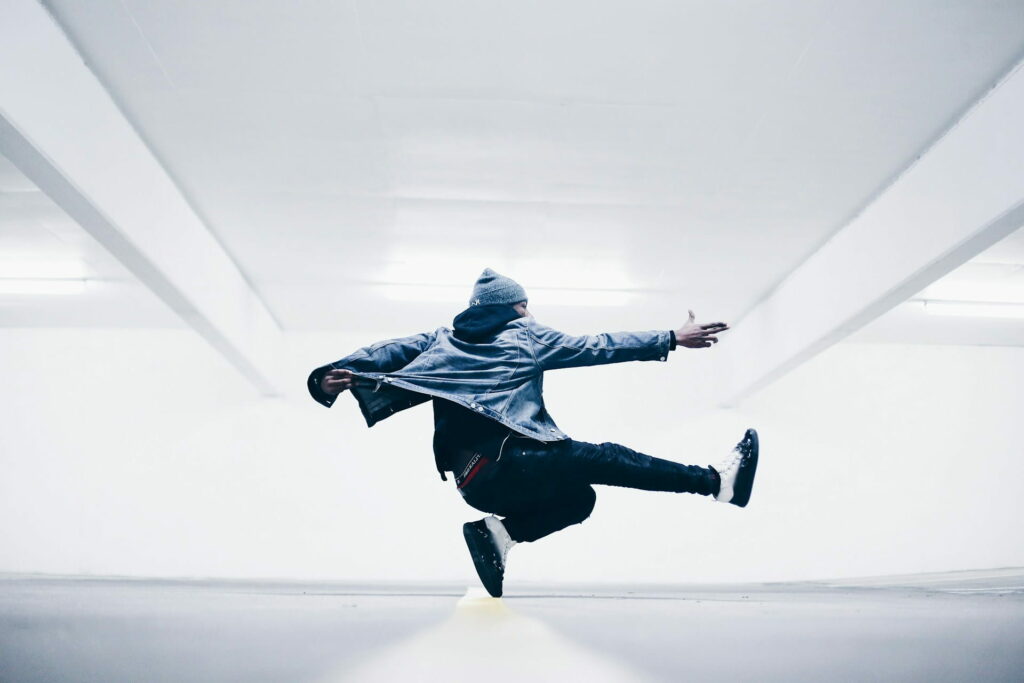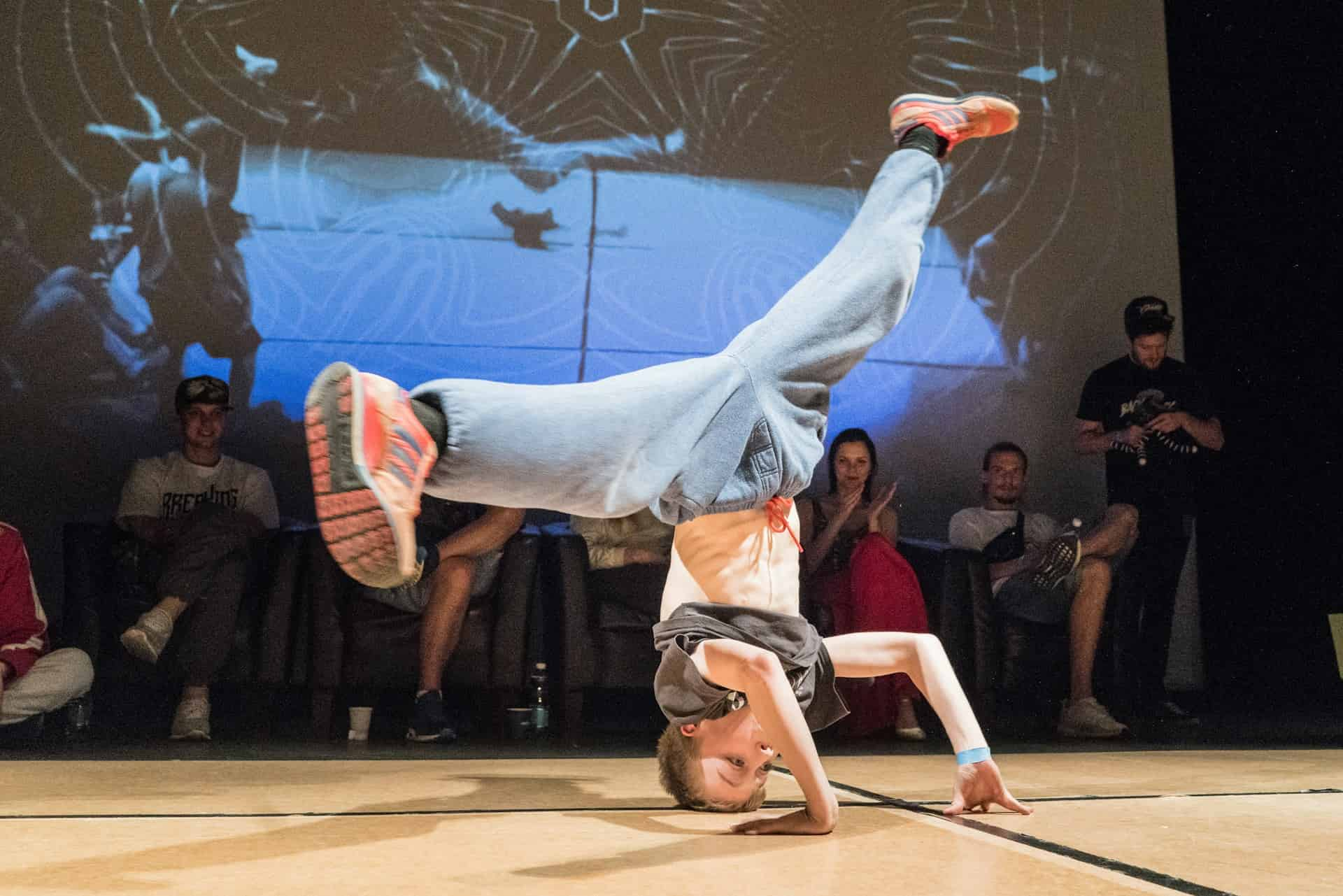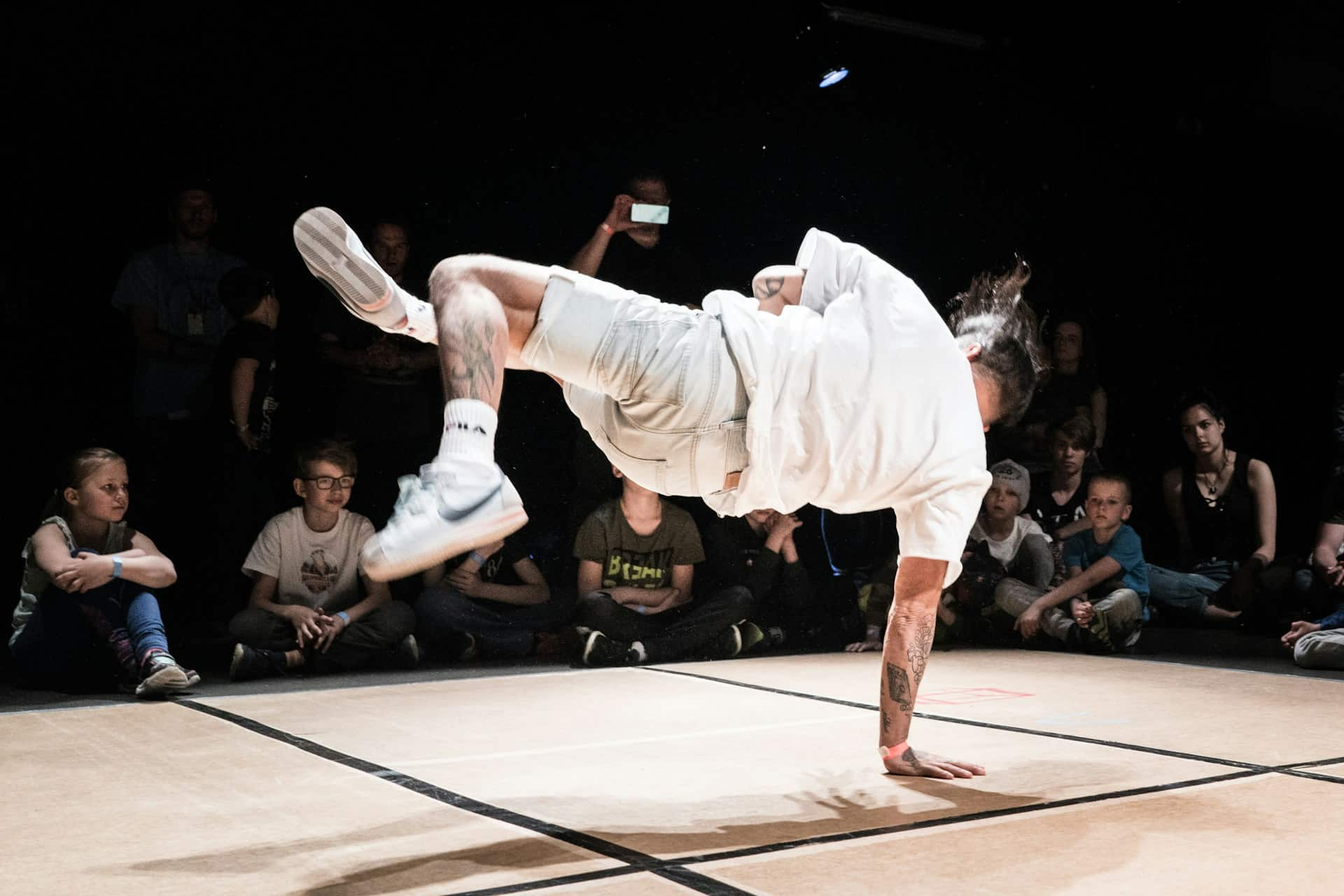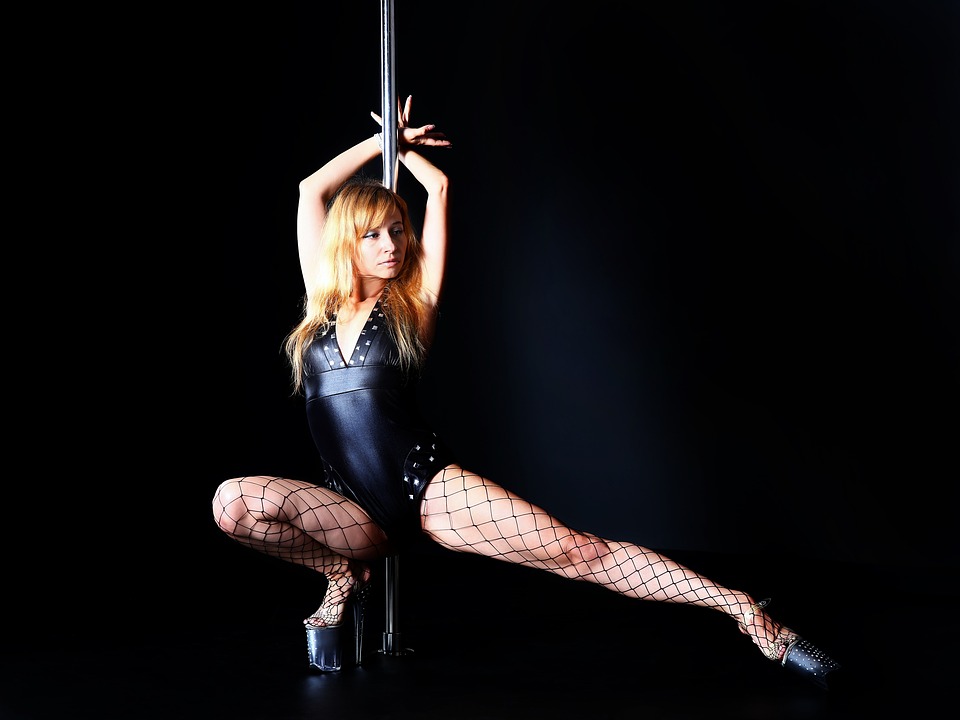
Summary
Breakdancing initiation: how to start calmly?
Want to get started with breakdancing? Breakdancing intrigues and attracts, but where to start? This art of dance combines strength, pace And personal expression, requiring technique and patience. Each movement, from Top Rock to Windmill, builds the foundation of this vibrant dance.
Summary
Introduction to breakdancing initiation
The path to mastering breakdance initiation varies depending on each person's commitment and practice. With clear fundamentals and progressive steps, getting started becomes an accessible and rewarding adventure.
What is breakdancing?
Breakdancing, often referred to simply as breaking, is a dynamic dance that combines acrobatic movements and rhythmic steps. Born in the 1970s in the deprived neighborhoods of New York, this style of dance is an integral part of the hip hop dance. Initially a form of expression for young people, breakdancing quickly spread across the world, evolving with popular culture.
Its richness comes from its history, transforming itself from a means for young people to express themselves and stand out, to an essential element of international dance competitions and urban dance. Breakdancing also appears in major sporting events such as the Olympic Games. The evolution of breakdancing reflects not only changes in music and fashion but also in society itself, becoming a bridge between different cultures and generations and this is particularly the case in dance in tahiti where brekadance elements are present.
Why choose breakdancing?
You ask yourself how to learn to dance and why breakdancing? Breakdancing offers much more than the opportunity to perform impressive moves for a special occasion. On a physical level, it improves strength, the agility And endurance. Breakdancing is a dance that muscles by engaging all muscle groups, thus improving coordination And the balance.
On a mental level, breakdancing is a unique form of expression that allows you to unleash your creativity and develop your self-confidence. It encourages innovation, with each dancer bringing their own style and movements. In addition to its physical and mental benefits, breakdancing creates a close-knit community where mutual respect and sharing are essential.
Opting for breakdancing means choosing an enriching and entertaining path to staying in shape, while being part of a vibrant and evolving culture. It is a powerful means of expression that transcends words, offering everyone the freedom to tell their own story through movement.
Is it difficult to learn break dancing?
Learning to breakdance is an exciting challenge, full of rewards. This dance is not limited to chaining movements; it’s an art that takes time, determination and a lot of practice.
Beginner's Challenges
Many mistakenly believe that this discipline is out of reach, reserved for those who are already athletic or have a natural talent for dance. The truth is that everyone starts somewhere. Yes, the acrobatic moves and spectacular spins can seem intimidating at first. However, with patience and commitment, progress is not only possible but guaranteed.
How to overcome obstacles
Start small: Don't jump straight into the more complex movements. Start with the basics and work your way up. Every small success builds confidence and competence.
Regular practice: Consistency is key. Even just a few minutes a day can lead to significant long-term improvements.
Find a community: Surround yourself with people who share your passion. Learning from others and sharing your progress can be incredibly motivating.
Be patient with yourself: Understanding that learning to breakdance is a marathon, not a sprint, will help you stay motivated. Each dancer has their own learning pace.
Celebrate every progress: Even the smallest ones. This helps you stay motivated and grateful for how far you have come.
There dance is a sport which takes time and devotion to master. But with perseverance, it is surprisingly accessible. The key is not to be discouraged by obstacles but rather to see them as opportunities to learn and grow. The journey to becoming a breakdancer can be long and full of challenges, but it is a rewarding journey, full of learning and personal accomplishment.

The 4 basic movements of breakdancing
This activity consists of several basic figures, each serving as a foundation for more complex sequences. These fundamental elements allow beginners to get started with breakdancing and understand its principles. Focus on the four pillars that open the door to the vibrant world of breakdancing.
The Top Rock
Top Rock is the face of breakdancing, often the first move you learn. This is the part of breakdancing that is danced standing up, and it is often where a performance begins, serving as an introduction before moving on to the floor movements. The Top Rock is marked by a footwork rhythmic and expressive, which captures attention and establishes the dancer's style. It's not only about movements, but also about attitude, confidence, and the way you communicate with the music and with the audience. Varied and adaptable, Top Rock can be endlessly personalized, reflecting the unique personality of each dancer. Here's how to do it:
- Start by standing position, feet slightly apart.
- The basic step consists of moving one foot in front of the other, transferring your weight from one foot to the other. This movement must be fluid and rhythmic.
- Incorporate your arm to add style and express your personality. They can swing, point, or follow the rhythm of your steps.
- Vary your movements by changing direction, jumping lightly, or introducing tricks to make your Top Rock unique.
The 6-Step
The 6-Step is the heart of breakdancing floor movements, a foundation on which many other movements are built. As the name suggests, it consists of six distinct steps, performed in a circle around the dancer's hands. This sequence creates a continuous, dynamic flow that is mesmerizing to watch. 6-Step is essential for develop endurance, there upper body strength, and the coordination. He also teaches space management and the fluidity movements, essential for a breakdancer. Here is how this movement breaks down:
- Starting position: Sit in a squat position with your hands in front of you to support your weight.
- Step 1: Place your left hand on the floor beside you, push your right foot through your hands, extending your left leg behind you.
- Step 2: Slide your left foot behind your right foot while moving your right hand farther to the right, preparing for the circular motion.
- Step 3: Continue the circular motion by pushing your right foot under your left leg, ending up in a low squat position.
- Repeat these movements in reverse to complete the cycle and return to the starting position.
The Baby Freeze
The Baby Freeze is a static pose that requires balance And control. This is often the first balance figure beginners learn. Despite its relative simplicity, the Baby Freeze is powerful for adding a striking visual effect to a routine. It can serve as a stopping point in a sequence, allowing the dancer to mark the music or transition to another set of movements. Mastering the Baby Freeze opens the door to more complex freezes and acrobatic moves. To reproduce it, here are the steps:
- Start with you kneel on the floor, hands placed in front of you for support.
- Place your right elbow against your hip or abdomen, depending on your comfort, to create a pivot point.
- Transfer your weight on your hands, lifting your feet off the floor.
- Raise your legs in the air, using your elbow as a pivot to keep your body stable.
- Keep your head and hips high to maintain balance, your legs slightly bent for the pose.
The Windmill
The Windmill is one of the most iconic and visually impressive moves in breakdancing. It consists of a continuous rotation of the body on the ground, legs spread in the air, creating the illusion of a windmill. Although it is more advanced, the Windmill is fundamental to understanding the principle of circular movement in breakdancing. Its learning develops the power, the agility and the sense of timing. Successfully completing the Windmill is often seen as a rite of passage, marking the transition from a beginner to a more experienced practitioner. The steps to follow:
- Starting position: Lying on your back, arms extended to either side for balance.
- Launch yourself by propelling yourself sideways, using your shoulders as an axis of rotation.
- Use your legs to create a circular motion, keeping them apart and rotating them over and around your body.
- Keep your torso up using the strength in your arms and shoulders to maintain the rotation.
- Practice keeping the movement smooth, making sure to keep the motion circular without interruption.
How long does it take to learn breakdancing?
The question of how long it takes to learn breakdancing intrigues many beginners. The answer, although variable, relies on several key factors that influence each individual's learning journey.
Factors influencing learning
Age and physical condition: Although breakdancing is accessible to all ages, younger learners may find it easier to develop the necessary flexibilities and strengths. However, good physical condition can greatly accelerate learning, regardless of age.
Frequency and intensity of training: The more regularly you train, the faster you will progress. Short but frequent sessions are often more effective than long sessions spaced apart.
Prior dance experience: Having a foundation in dance or other physical disciplines can help understand movements more quickly and integrate musicality.
Establish realistic goals
Set short and long term goals: Starting with achievable short-term goals creates a feeling of accomplishment that motivates you for the future. Long-term goals give direction and meaning to training.
Be patient and consistent: Learning a skill as complex as breakdancing takes time. Accept the ups and downs of the learning process.
Celebrate small victories: Every new mastered move or improvement, no matter how small, is a step toward breakdancing mastery. These victories build self-confidence and commitment.
Scheduling training sessions: A regular training schedule with specific goals for each session can optimize the time spent practicing.
On average, with regular, dedicated training, beginners can expect to see significant progress within the first few months. However, mastering the most advanced movements and developing a unique personal style can take several years. Breakdancing is a personal and artistic journey; each dancer progresses at their own pace, discovering not only an art form but also a part of themselves.
The important thing is to focus on the process rather than the destination. Learning to breakdance is an enriching journey, offering lessons in perseverance, creativity, and self-improvement.
Breakdance choreographies for beginners
Breakdancing choreographies for beginners are designed to introduce newcomers to the beauty and complexity of this art form, allowing them to build a solid foundation while expressing their creativity. Starting with simple but engaging routines helps build self-confidence and hone technical skills.
Build a Simple Routine
Choose your basic moves: Start with simple moves such as the Top Rock, 6-Step, and Baby Freeze. These elements provide a solid foundation and are visually impressive, even for beginners.
Music and rhythm: Select music that inspires you and that you feel comfortable dancing to. The rhythm should be clear and not too fast, making it easy to stay in sync.
Structure your routine: A routine might begin with a Top Rock to establish rhythm, followed by a smooth transition to 6-Step, and end with a Baby Freeze for visual impact. Repeat the sequences to build a longer routine.
Repetition : Practice your routine regularly. Repetition is key to fluidity and confidence in your movements.
Examples of detailed choreography
Here is an example of simple choreography for beginners, combining rhythm and style:
Top Rock (8 accounts): Start with a basic Top Rock step, adding arm variations to express your personal style.
Transition (4 accounts): Glide smoothly to the floor, using a squat pose as a transition to ground movements.
6-Step (8 counts): Perform a full 6-Step, maintaining your energy and making sure each step is clear and precise.
Baby Freeze (4 accounts): End your sequence with a Baby Freeze, holding the pose long enough for the visual effect, then return to a standing position to conclude.
Personalization: Once you're comfortable with this routine, add your own variations or incorporate other basic moves you've learned.
Creating and practicing breakdance choreography for beginners not only develops technical skills, but also explores the artistic side of breakdancing. It's an opportunity to express your personality through dance, by telling a story or sharing a message. Encourage yourself to be creative, experiment with different movements and music, and most importantly, have fun in the process.

Conclusion
Getting started in breakdancing is accessible to everyone, requiring commitment and practice. Basic movements like the Top Rock, 6-Step, Baby Freeze and Windmill form a solid foundation for progress. Learning varies by individual, influenced by training frequency and personal determination.
Building a simple choreography helps solidify what you have learned and express your creativity. Beginners can quickly feel the physical and mental benefits of breakdancing, enriching their dancing experience. Exploring more through regular sessions and participating in a community can accelerate progress.
Start dancing with DECIBEL
If the association of dance and cardio attracts you, DECIBEL® is the ideal place to take dance classes. Dive into our sessions 45 minutes combining dance and fitness, specially designed to improve your endurance and sculpt your body.
Explore a world of dynamic and diverse choreography, supported by a warm community. Guided by our energetic trainers, focus on your abs, thighs and glutes in a motivating environment, brightened with uplifting music and soft lighting.
At DECIBEL®, entertainment is key at all times!
Read also
follow us
on instagram
Follow our news,
take advantage of our tutorials and participate to our
contests!
BREAKING NEWS!
Receive our newsletter.






